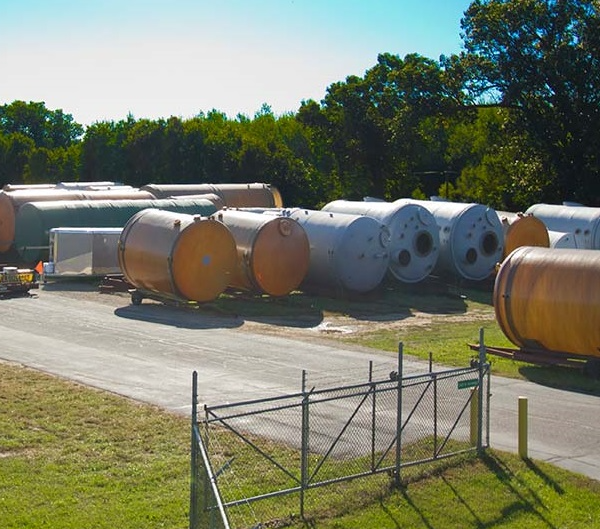
Participating in an exhibition in Dusseldorf, one of Europe’s prime business and trade fair locations, requires meticulous planning and preparation. Among the many aspects to consider, selecting the right materials for your exhibition stand is crucial. This decision impacts not only the aesthetics and functionality of your booth but also its durability, cost-effectiveness, and sustainability. This article delves into the various materials available for constructing exhibition stands and offers guidance on how to choose the most suitable ones for your needs.
Understanding the Importance of Material Selection
The materials you choose for your exhibition stand will affect several key factors:
Aesthetics: The visual appeal of your stand can attract visitors and create a lasting impression.
Functionality: Different materials offer varying degrees of flexibility, ease of installation, and reusability.
Durability: The longevity of your materials ensures that your stand can withstand multiple uses and the rigors of transportation.
Cost: Your budget will influence your material choices, balancing initial expenditure with long-term value.
Sustainability: Eco-friendly materials can enhance your brand’s image and align with growing environmental consciousness.
Types of Materials for Exhibition Stands
Wood and Plywood
Pros: Wood and plywood are popular for their versatility and durability. They provide a sturdy framework and can be easily customized with paint or veneers. These materials can support heavy structures and offer a polished, professional look.
Cons: They can be heavy and expensive to transport. Additionally, wood and plywood may require more effort and time to assemble compared to lighter materials.
Metal
Pros: Metals like aluminum and steel are highly durable and can support complex structures. Aluminum is lightweight yet strong, making it ideal for modular stands. Metals also offer a sleek, modern appearance.
Cons: Metals can be more expensive and may require specialized tools and skills for assembly. They are also less flexible in terms of design compared to some other materials.
PVC and Plastic
Pros: PVC and other plastics are lightweight, cost-effective, and easy to mold into various shapes. They are water-resistant and can be used to create vibrant, colorful displays.
Cons: These materials may not be as durable as wood or metal and can look less professional if not used properly. They are also less environmentally friendly unless recycled options are used.
Fabric
Pros: Fabric is lightweight, easy to transport, and can be printed with high-quality graphics. It offers flexibility in design and can create a soft, inviting atmosphere.
Cons: Fabric may require additional structural support and can be prone to wear and tear. It also needs to be properly maintained to avoid wrinkles and stains.
Glass and Acrylic
Pros: Glass and acrylic offer a high-end, sophisticated look. They can be used for display cases or decorative elements and are easy to clean.
Cons: These materials are fragile and can be heavy. They also tend to be more expensive and require careful handling.
Composite Materials
Pros: Composites like Dibond (aluminum composite panels) combine the strengths of different materials, offering durability, lightweight, and ease of use. They are often used for signage and graphic panels.
Cons: While versatile, composite materials can be costly and may not be suitable for all types of structures.
Factors to Consider When Choosing Materials
Exhibition Goals and Design
Your material choices should align with the overall design and objectives of your exhibition stand. A high-tech industry might benefit from sleek metals and acrylics, while an eco-friendly brand could opt for sustainable woods and fabrics.
Budget
Determine your budget early in the planning process. To make sure you get the best value, weigh cost, durability, and quality. Sometimes, investing more upfront in durable materials can save costs in the long run by reducing the need for replacements.
Durability and Reusability
If you plan to use your exhibition stand for multiple events, choose materials that can withstand repeated assembly and disassembly. Durable materials like metal and high-quality plywood can be more cost-effective over time.
Ease of Transport and Assembly
Consider the logistics of transporting and assembling your stand. Lightweight materials like fabric and PVC can reduce shipping costs and simplify setup. Modular designs using aluminum can offer a good balance of strength and portability.
Aesthetic Appeal
Getting people to come to your booth depends on how well it looks. Choose materials that reflect your brand’s image and can be easily customized to fit your design vision. High-quality finishes and vibrant graphics can make a significant difference.
Environmental Impact
The exhibition sector is seeing a rise in the importance of sustainability. Choose products that are recyclable or composed of recycled materials. Wood certified by the Forest Stewardship Council (FSC) and biodegradable fabrics are excellent eco-friendly options.
Practical Tips for Material Selection
Consult with Experts
Work with exhibition stand designers and builders who have experience with a variety of materials. Their knowledge can assist you in making wise choices and avoiding typical mistakes.
Prototype and Test
If possible, create prototypes or small-scale models of your stand. This allows you to test the materials and design before committing to full-scale production.
Evaluate Suppliers
Choose reputable suppliers known for quality and reliability. Ensure they can meet your specifications and deadlines, especially for custom materials.
Plan for Maintenance
Consider how easy it is to maintain and repair the materials. Ensure you have a plan for cleaning, storage, and any necessary repairs between exhibitions.
Stay Informed About Trends
The exhibition industry is continually evolving. Stay updated on new materials and technologies that could enhance your stand’s performance and appeal.
Case Study: Successful Material Choices in Dusseldorf
Consider a company participating in the Medica trade fair in Dusseldorf, the world’s largest event for the medical sector. This company decided to emphasize sustainability and innovation in their stand design.
Wood and Plywood: The stand’s framework was built using FSC-certified plywood, combining strength with environmental responsibility.
Fabric: High-quality, biodegradable fabric was used for large graphic displays, creating a welcoming atmosphere while ensuring easy transport.
Metal: Aluminum was chosen for the modular sections, providing durability and a modern look without excessive weight.
Recycled PVC: For smaller elements and signage, recycled PVC was utilized, balancing cost-effectiveness with environmental concerns.
The result was a visually stunning and sustainable exhibition stand that effectively communicated the company’s values and attracted significant attention from attendees.
Conclusion
Crafting the perfect exhibition stand in Dusseldorf hinges on carefully navigating aesthetics, functionality, durability, cost-effectiveness, and sustainability. To ensure success, delve into the unique properties and advantages of different materials, empowering you to make informed choices that elevate your brand’s visibility and triumph at the exhibition. Partnering with seasoned exhibition stand builders in Dusseldorf, considering your future requirements, and emphasizing top-notch quality and eco-friendliness will culminate in a striking, unforgettable exhibition stand.










